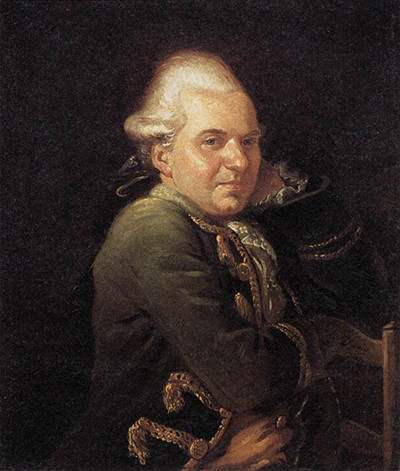François Buron appears in this confident portrait, and his wife would also get the Jacques Louis David treatment in an additional painting. Both display an impressive handling of light, drapery and facial depictions.
The scene found here captures very little detail besides the model himself, allowing the full focus to go onto this upstanding gentleman. He is positioned side on to us, sat on a wooden chair turned backwards to allow this unusual pose. The light is brightest on his facial features, allowing those to grab our attention initially. He has a traditional 18th century hair style for the upper classes and immediately strikes us a well connected individual. His jacket is a delightful shade of green and features detail around the sleeves and down the centre around the buttons. Gold stiching is used to produce a sense of style and expense and this would likely have continued onto his trousers too. We can just about make out a mustard coloured waistcoat which appears around his stomach area. There is also a pleated shirt below that which appears just below his left arm.
Artist Jacques Louis David was encouraged by François Buron and his wife to pursue a career in art, after others had attempted to persuade him from taking this path. The reward for this support would be two beautiful portraits, one of which you find here. Both were created in 1769, and Francois himself was actually the artist's uncle. The portrait itself has changed hands a number of times and now resides in a private collection, believed to be based in New York. French art has always had a large following within the US, and even though American art has achieved great success over the past century or so, there is still a great respect for the work from Europe in previous centuries, much of which would influence all of today's modern art movements. The artist would go onto to gift a number of other portraits to those who had helped him during his lifetime, be it through a fruitful friendship or career opportunities.
The artist would undergo a number of periods of training and study in order to achieve the supreme accuracy found in portrait paintings such as this. Indeed, he was actually still learning at the time of this artwork, seeking new ideas from abroad as well as making use of the great resources available within his native France. He would eventually work for several years in Rome, Italy, after claiming a highly respected prize. This would further develop his thinking as he was able to research the great masterpieces of the Italian Renaissance over a period of several years. At that point he would send all his work back to France so that any improvements could be judged by academics.




